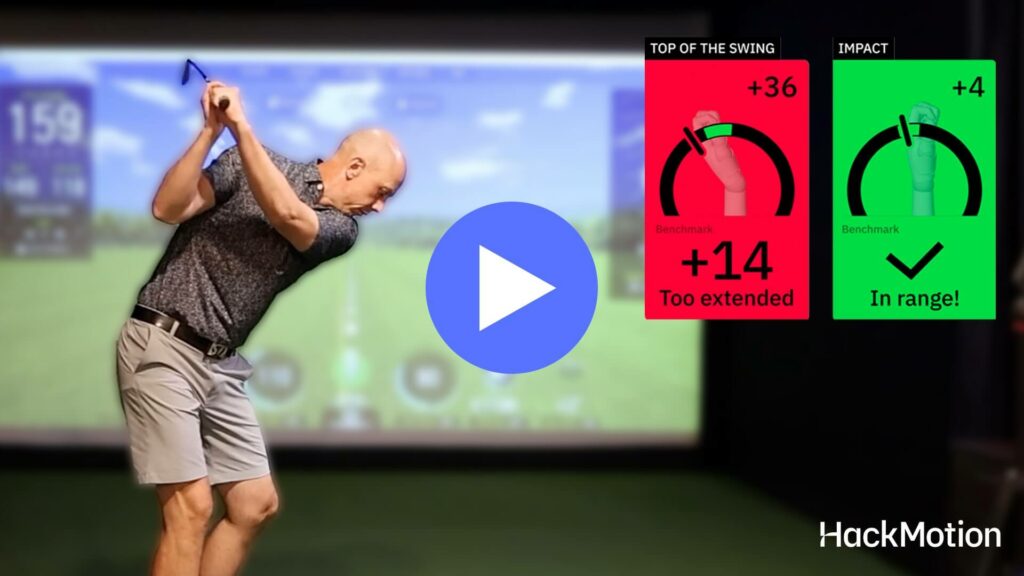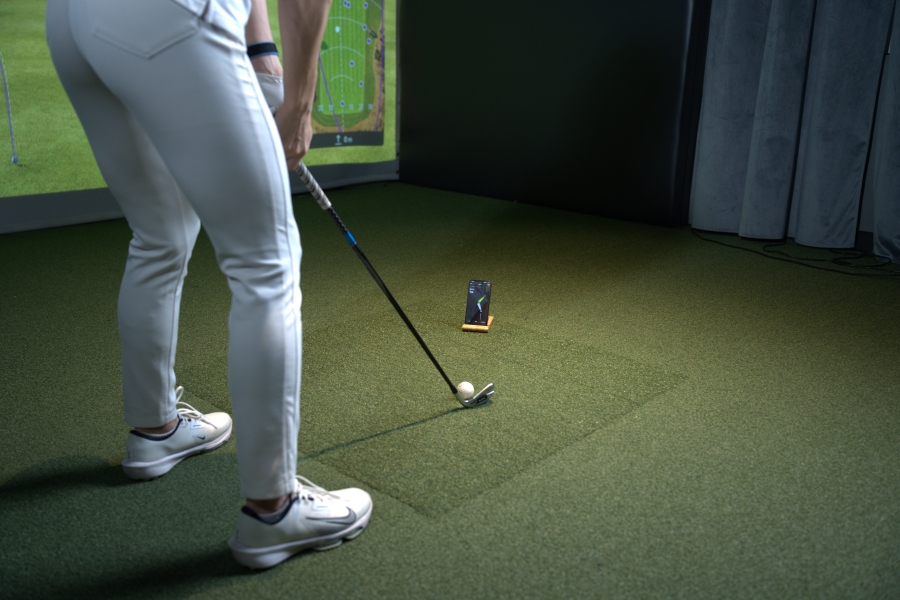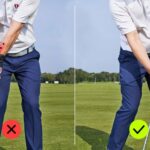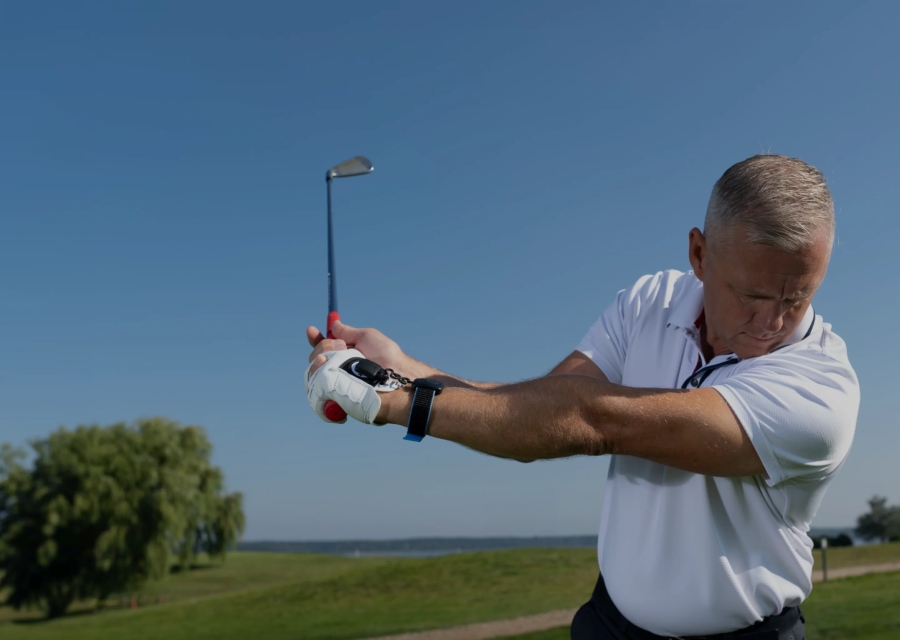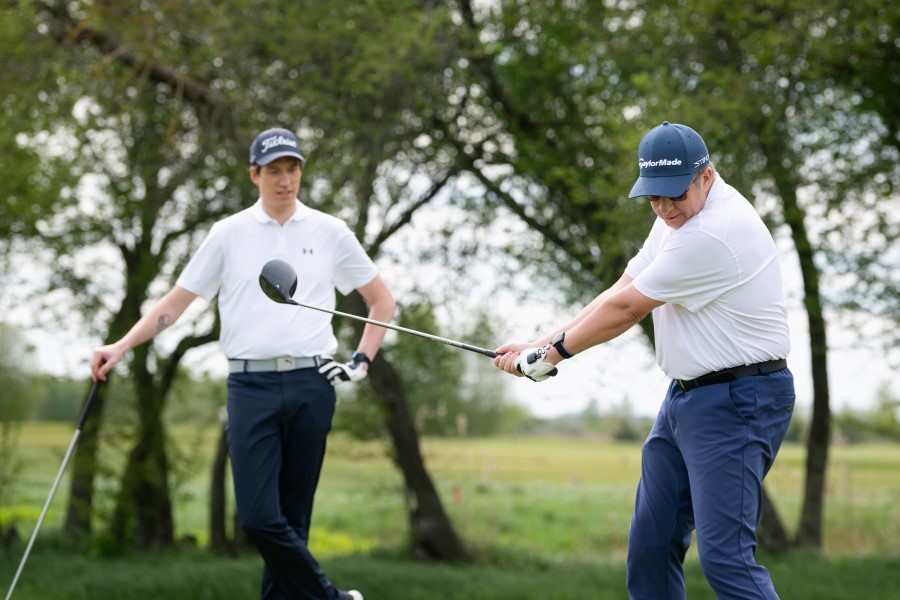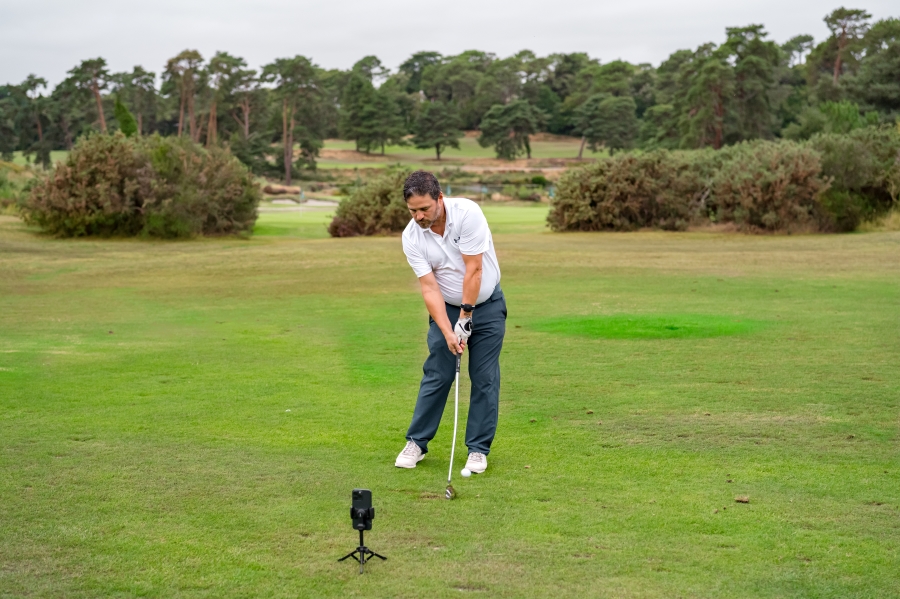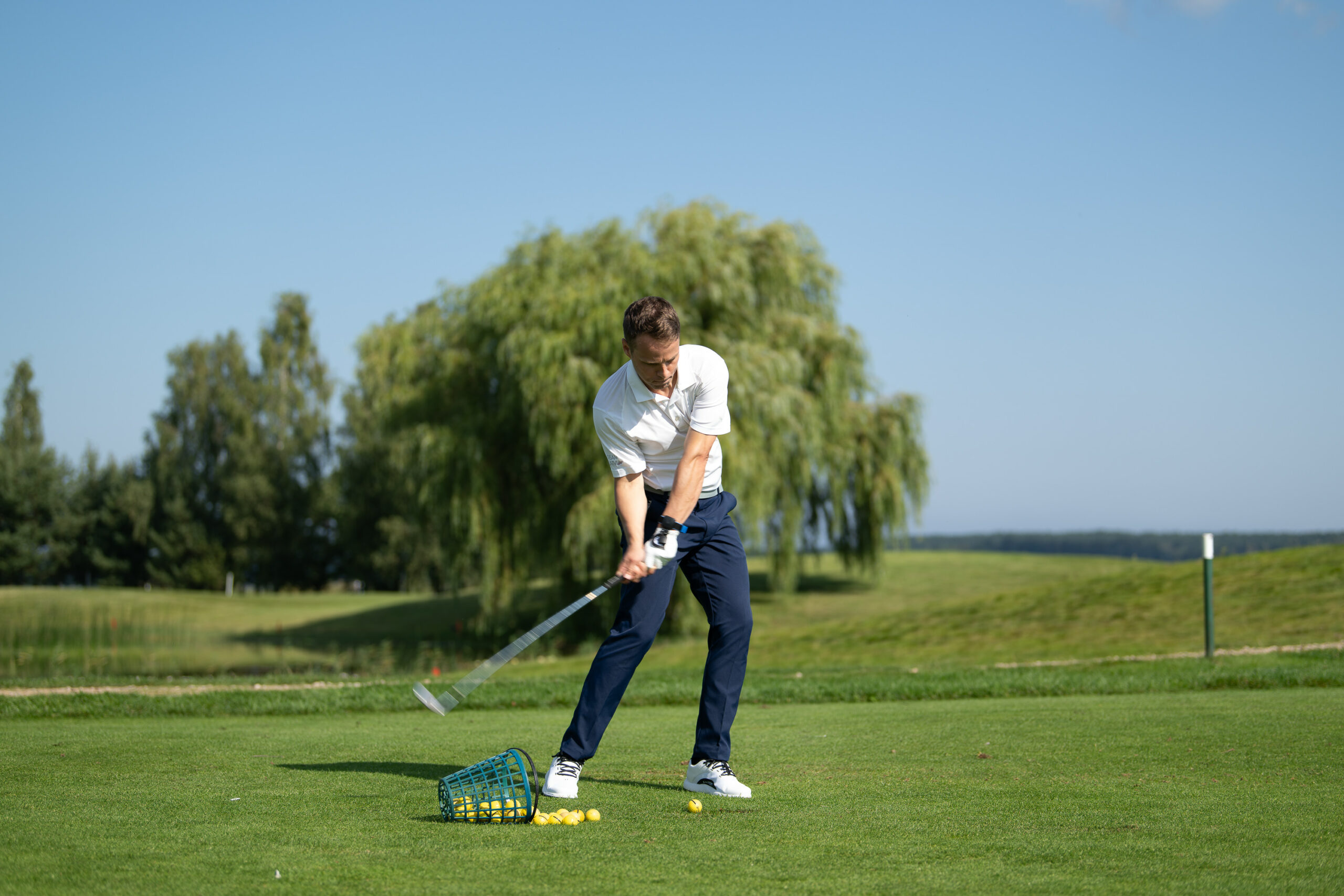11 Reasons Your Golf Swing Is So Inconsistent (And How to Fix Each One)
Ever shoot 82 one day and 92 the next? Few things in golf are more frustrating than feeling like you’ve “lost” your swing overnight.
Inconsistency is one of the most common challenges golfers face—but the good news is it can be fixed.
In this guide, we’ll cover 11 common reasons your swing may be all over the place and how to address each one. These are issues I’ve personally dealt with over the years, and tackling them has made a huge difference in my own game.
Why is My Golf Swing so Inconsistent? (Key Takeaways)
If you don’t have time to go through all of these inconsistencies in the golf swing (and their fixes) here are a few important things you can take with you right now.
- The golf swing has many moving parts; identifying exactly where the breakdown is happening is the first step to fixing it.
- Wrist angles control the clubface; if they’re off at setup, the top, or impact, your shot direction will suffer.
- Without feedback and targeted drills, it’s nearly impossible to measure improvement. Tools like HackMotion give you real-time data so you can practice with purpose.
- Don’t overlook equipment; clubs that don’t fit your swing can add inconsistency even when your technique is solid.
- Practice the right things, not just shot after shot without a plan.
- Physical conditioning matters; fatigue can cause sloppy mistakes, especially late in the round.
Contents
- 11 Reasons Why Your Golf Swing is So Inconsistent
- Your Grip is Not Always the Same
- The Clubface is Not Square at Address
- You Skipped Too Many Days at the Gym!
- Practice Shouldn’t Always be Pretty
- Eliminate the Number of Variables
- It Could be Time for a Golf Club Fitting
- You Don’t Know Where Your Feet Belong
- Overactive Hands in the Swing
- Eliminate Some Swing Thoughts
- The Pre Shot Routine Varies Too Much
- Golf is Hard
- Drills to Fix Inconsistency in the Golf Swing
- Summary
11 Reasons Why Your Golf Swing is So Inconsistent
The primary reason your golf swing is inconsistent is that you don’t do things the same way every time. It’s as simple as that.
Golfers often challenge me on this concept, asking how it’s possible to swing the golf club the same way every time. I know; it’s not 100% possible to repeat the same swing.
However, you can get a routine down, focus on the most critical features, and eventually start repeating your swing the majority of the time.
Your Grip is Not Always the Same
The golf grip can feel unnatural, especially after lessons or adjustments from an instructor. The grip is your only connection to the club and one of the most important fundamentals of the game.
If the grip changes from one swing to the next, even slightly, it alters the wrist angles and clubface position, leading to inconsistent ball flight.
Many golfers don’t realize they’re putting their hands on the club differently each time, and this small variation can cause major problems.
Fixing the Grip
Practice gripping the club the same way every time. Training grips can help, but simply keeping a club nearby and rehearsing the correct placement daily is a great start.
Using HackMotion takes the guesswork out of grip consistency. By measuring wrist angles at setup, you can see if your grip is changing from swing to swing.
There’s no single “perfect” wrist angle at setup; strong and weak grips will look different, but the key is to repeat the same position every time.
Here are a few great resources for getting the perfect grip:
The Clubface is Not Square at Address
If the clubface isn’t square when you set up, it’s difficult to return it to square at impact.
What looks square to one golfer may appear slightly open or closed to another, and even small variations at address can lead to big misses.
Fixing an Open or Closed Clubface at Setup
Learn what a square clubface looks like. Place each of your clubs against a door frame or a 90-degree edge, which shows true square. Practice setting the club down in that position until it becomes second nature.
Keep in mind that certain club designs, like offset heads or draw-bias models, can make square appear slightly different. The key is to find the correct position for your clubs and repeat it every time you address the ball.
You Skipped Too Many Days at the Gym!
Golf is more athletic than ever, and fatigue can quickly lead to sloppy swings. When you’re tired, clubhead speed drops, ball compression suffers, and mistakes multiply.
Fixing Strength and Stamina Issues
You don’t need a full gym program to improve. Start with daily walking or light jogging, aim for at least 10,000 steps.
Remember, 18 holes can mean 5+ miles of walking, so building stamina will help you stay sharp from the first tee to the last green.
Practice Shouldn’t Always be Pretty
It’s easy to fall into the trap of only practicing what feels good. You’ll get up there and hit those long, straight drives or perfect 7-irons. However, real improvement happens when you work on the shots you struggle with.
Spend range time fixing the “ugly” swings: low pulls with the 4-iron, chunked wedges, or that hybrid you avoid under pressure.
These shots often cause on-course swing changes that lead to inconsistency. By practicing them deliberately, you build the confidence to swing normally in competition.
Sample Practice Plan for Consistency
- 10 minutes: Warm-up with short chips and half swings.
- 20 minutes: Work on your weakest full-swing club (track wrist angles with HackMotion to ensure your setup and release are consistent).
- 15 minutes: Distance control practice—hit 3 clubs to random targets and record carry yardages.
- 10 minutes: Play “worst ball” on the range—hit two balls and play the worse shot.
- 5 minutes: Finish with a confidence club (the one you hit best) to leave the session on a positive note.
Eliminate the Number of Variables
Changing your swing thought multiple times during a round is a recipe for inconsistency. Pick one or two things to focus on and stick with them. If something major comes up, make the adjustment, but otherwise, keep the variables to a minimum.
Think like a scientist: an experiment works best when all conditions stay the same. If your grip changes on one hole, stance on the next, and backswing on another, you have no baseline to measure improvement.
Keep it simple, stay committed to your focus points for the round, and save any big changes for your next practice session.
Here’s a quick cheat sheet if you need to diagnose an issue mid-round:
| Variables | What You Can Solve |
|---|---|
| Grip | Incorrect grip position can cause slice and hooks |
| Swing Path | Allows for more accurate shots and more control |
| Backswing | Improves power, distance, and accuracy |
| Stance | Balance, weight distribution, and distance from the ball can improve accuracy in turf interaction and ball striking |
| Follow Through | Complete rotation and swing |
| Tempo | Better rhythm, timing and even balance at times |
| Ball Position | Ball flight, trajectory and ball direction |
| Weight Transfer | Can prevent hooks and slices if done properly |
| Alignment | Clubface square to the target |
It Could be Time for a Golf Club Fitting
Clubs that don’t match your swing can quickly lead to inconsistency. Even a great swing will produce poor results if the clubhead, shaft, or specs aren’t right.
If your clubs are more than seven years old, they may be outdated in terms of technology and forgiveness.
Get fit for clubs that match your height, flexibility, and swing style to ensure your equipment is helping, not hurting, your game.
You Don’t Know Where Your Feet Belong
The stance, setup, and posture are key fundamentals—if your feet aren’t in the right place, the rest of your swing will suffer.
An ideal stance for most full swings is feet about shoulder-width apart, weight balanced evenly, knees slightly flexed, and spine tilted forward from the hips so your arms can hang naturally without tension.
Tips for Building a Consistent Stance
- Practice with alignment sticks to train your body into the correct setup position.
- Adjust the foot width slightly narrower or wider based on the club or lie.
- Experiment on the range with open and closed stances to see how each affects your swing and ball flight.
- Once you find your ideal stance, repeat it every time to build muscle memory and improve consistency.
Overactive Hands in the Swing
While great players know how to use their hands effectively, letting them dominate the swing often leads to inconsistency.
When the hands get too involved, the clubface becomes harder to control, especially at higher swing speeds.
Players who rely more on the larger muscles—the core, shoulders, and legs—tend to produce a smoother, more repeatable motion. These muscles are easier to control and provide better stability at impact.
Use HackMotion to Help
Hand action is a direct result of wrist motion. HackMotion tracks your wrist angles throughout the swing so you can focus on improving wrist mechanics rather than trying to “quiet” your hands.
When the wrists move correctly, the hands naturally play the right role, reducing the chances of flipping or steering the clubface.
Eliminate Some Swing Thoughts
Having too many swing thoughts can be a problem, but having none isn’t ideal either. Golfers still need a clear plan for how they want to hit the ball.
A good approach is to focus on one or two thoughts. One can be set up or stance related, and the other can be tied to the takeaway.
After the takeaway, the main goal should be to reach a full, balanced finish. This ensures the body is fully rotated and helps generate maximum ball speed.
The Pre Shot Routine Varies Too Much
A consistent swing starts with a consistent routine. If the steps before the swing change from shot to shot, it’s almost impossible to repeat the same motion.
Watch players like Keegan Bradley. While his style is unique, he follows the exact same sequence every time.
Think of the pre-shot routine like starting an engine: skip a step, and it won’t run smoothly. The routine serves as both a physical and mental trigger to get into the ideal position before taking the club back.
A Perfect Pre-Shot Routine
- Stand behind the ball and pick a specific target.
- Take one or two slow, focused practice swings to feel the motion.
- Step into the shot, set your feet, and align the clubface to the target.
- Look at the target one final time to lock it in.
- Take the swing without hesitation.
The exact steps can be adjusted for different shots, drivers, irons, or short game, but the sequence should remain identical for each type of shot. This consistency in preparation leads to consistency in execution.
Golf is Hard
Many golfers are entirely unrealistic about the results they can get on the golf course.
Set your expectations so that they are reasonable, and then follow our other tips to get some more consistency in your golf game.
Drills to Fix Inconsistency in the Golf Swing
Now that you have a better idea of what it takes to fix the inconsistency in your golf game, here are a few great drills to try.
Rob Cheney takes you through three unique drills, each with the ability to make a big impact on your ball striking.
Hit Hard, Stop Quick Drill
This simple drill is exactly as it sounds. You’ll attempt to hit the ball and stop the golf club as quickly as possible.
Stopping the golf club just after impact helps you establish more awareness of the clubhead and your body position. It also increases strength and power.
Hit Hard, Stop Quick Drill – Step by Step:
- Start with half swings (waist?high to waist?high); tee the ball low or begin without a ball.
- Strike the ball, then stop the club within a foot past impact, freeze your finish.
- Keep your chest steady and balanced; don’t let the wrists “flip.”
- Do 3 sets of 8–10 reps; when easy, lengthen the swing slightly while still braking fast.
- Optional HackMotion cue: look for a slightly flexed lead wrist at impact with minimal “flip” immediately after.
Keep Body and Arms Working Together
For this drill, Cheney holds a training aid between his arms as he swings back. The aid stays in place to ensure his arms and body work together throughout the swing.
Keep Body and Arms Working Together:
- Place a small ball or rolled towel between your forearms; light squeeze.
- Make slow takeaways, turning the torso, don’t lift with the hands.
- Hit half swings keeping the aid in place until just after impact.
- If it drops early, reset and slow down, use it as feedback.
- Progress to three?quarter swings; let the aid fall after the follow?through.
- Optional HackMotion cue: maintain steady wrist patterns (no sudden spikes) as the body rotation leads.
Wrench Drill
Finally the wrench drill will help get your impact position to be more consistent. Cheney shows you a pre-set that you can use to ensure you strike the ball with efficiency and the proper pivot.
Wrench Drill – Step by Step:
- Address the ball, then preset impact: 60–70% weight on lead side, hands slightly ahead, hips a touch open.
- Bow the lead wrist slightly (trail wrist extended).
- Make a small punch swing, keep forward shaft lean through impact—no scoop.
- Hold a low, abbreviated finish; stay balanced.
- Hit 10–15 reps, then blend into longer swings while keeping the same impact feel.
- Optional HackMotion cue: confirm lead wrist stays slightly flexed at impact with a stable face through the strike.
Summary
Here’s the good news: you are not the only one with an inconsistent golf swing.
The bad news for those asking why my golf swing is so inconsistent is that it takes a bit of time to become a more consistent player. Implement the fixes I gave you, practice at the range, and become a more intentional player.
Even if you consider yourself to have a golf swing that isn’t great or is untraditional, you can still become more consistent.
If your swing feels different every round, use our directory to find the best golf coach near you who uses HackMotion to spot the wrist and face issues that cause inconsistency.

